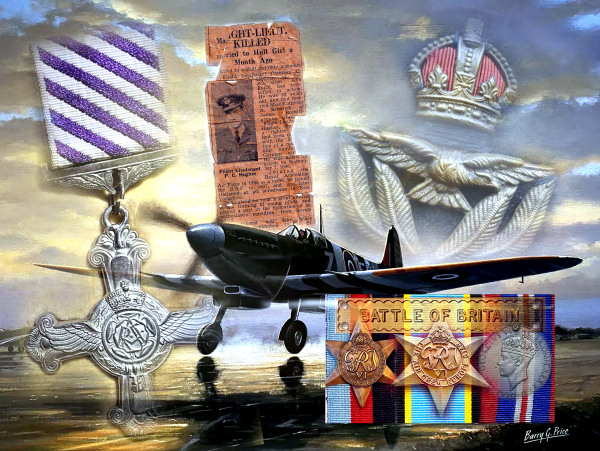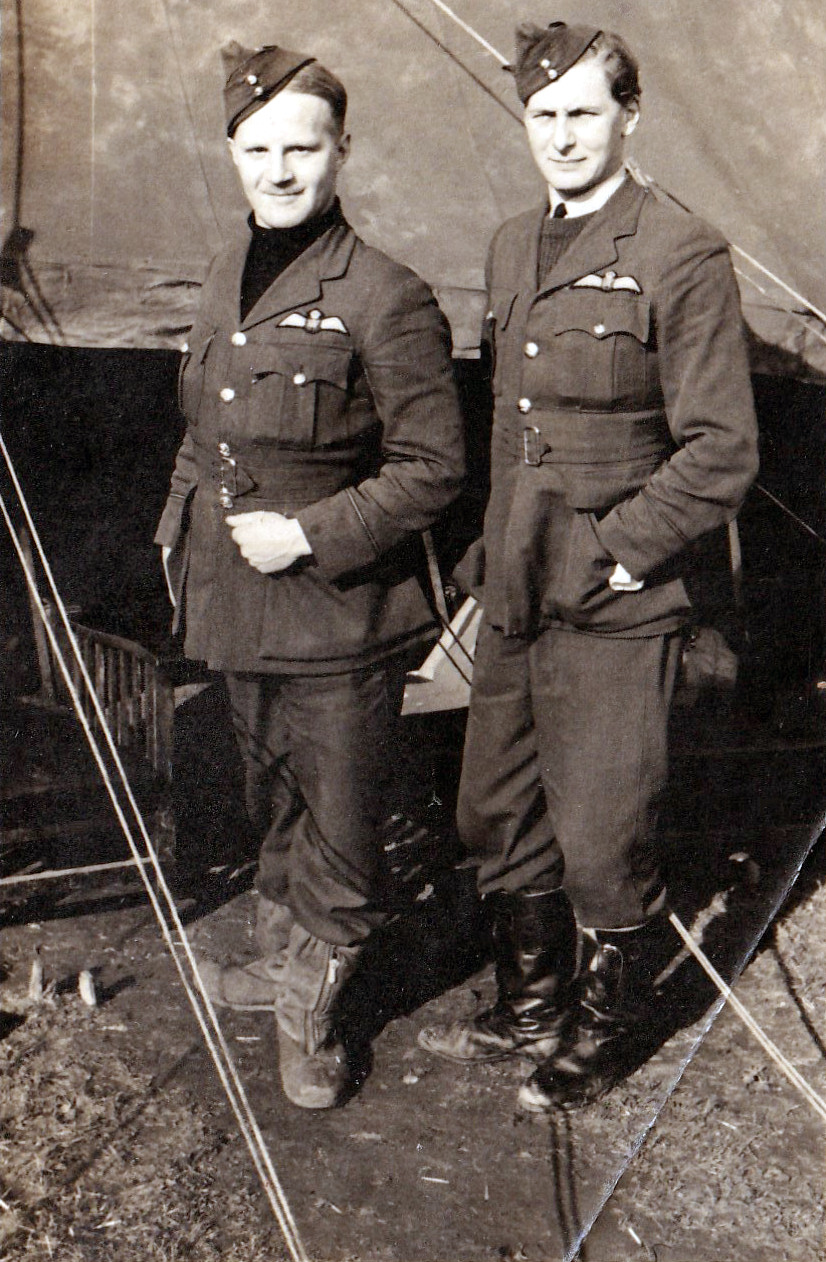|
A Brief Biography
of the Australian Fighter
Pilot killed over Surrey
during the Battle of
Britain, and buried here
in Sutton on Hull churchyard
in 1940

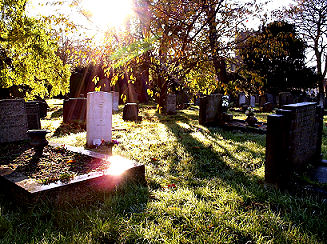
Pat's father,
also called Paterson
Clarence Hughes and a
schoolteacher in Cooma, 70
miles south of Canberra in
New South Wales. His mother
was Caroline Vennel, of
Cooma.
Pat Hughes, the youngest
in their family of five
boys and seven girls, was
born in Cooma on 19th
September 1917, and was
educated at the Cooma
Public School. When he was
12 years old, the family
moved to Haberfield in
Sydney and he attended the
Petersham Boys' School,
and later Fort Street
High, until the age of 17
years. He was a keen
sportsman, excelling at
football and swimming,
with an interest in model
aircraft and the wonders
of electricity.

photo
credit:
the RAAF Museum, Point
Cook, Victoria,
Australia.
In
1935, while awaiting
replies he had submitted
to both the Air Force and
the Navy, he worked for a
period at Saunders'
Jewellers in Sydney. After
being selected for both
services he chose the Air
Force and began his
training as a Cadet Pilot
at RAAF Point Cook in
Victoria. The smiling
photo above was taken
whilst he was a cadet at
Point Cook, having already
gained his wings.
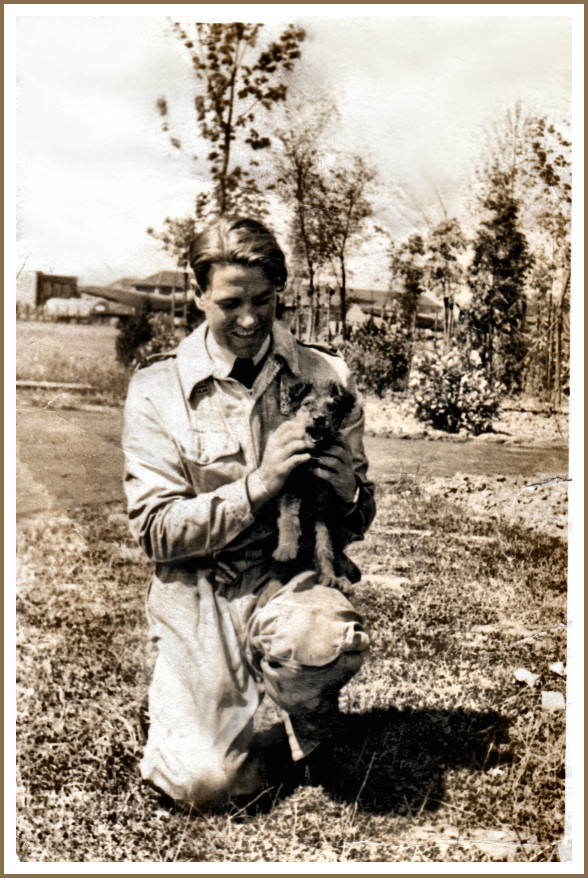
After
graduation, he was
selected with a number
of others to transfer to
the RAF under a special
Short Service Commission
Scheme.
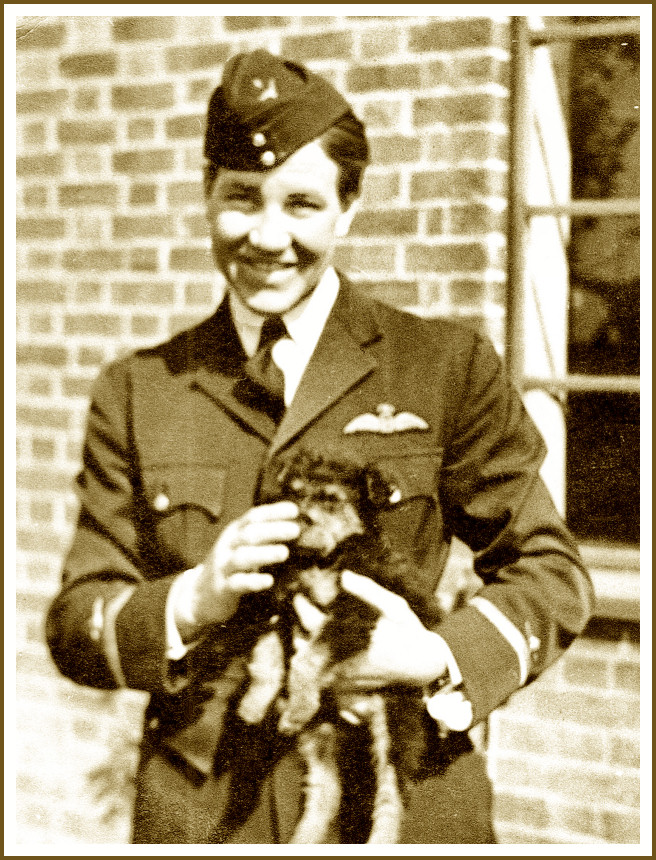
On 9
January, 1937, along
with about a dozen or so
other recently qualified
RAAF pilots, they sailed
for England aboard the
"SS NARKUNDER".
The ship
docked on 19 February at
Tilbury, which is also
the day his name
appears with the rank of
Flying Officer in the
Air Force Lists for the
first time. His address
on the ship's passenger
manifesto was given as
"Air Ministry, Australia
House", occupation, "Air
Pilot". After two
years training as a
fighter pilot, he was
then posted to 64
Squadron, RAF, based at
Church Fenton, when
hostilities began in the
September of 1939.
Pat was
promoted to Acting
Flight Lieutenant in
November 1939 as a
Flight Commander to the
newly formed 234
Squadron, then based at
RAF Leconfield in East
Yorkshire. Initially
equipped with Fairey
Battles, Bristol
Blenheims and Gloster
Gauntlets, but in March
1940 they were
re-equipped with
Spitfires. In June 1940,
234 squadron was
transferred to Cornwall.
It was here, in Bodmin
Registry Office, on 1
August 1940, that Pat's
marriage to Kathleen
(Kay) Brodrick of Hull
took place.
 It
is thought that he had
possibly met Kay at the
Beverley Arms Hotel in
Beverley, only in the
February, when he was
briefly stationed at RAF
Leconfield. It
would seem, upon his
posting to Cornwall, Kay
simply travelled down to
meet him and got work
herself, and married
there in Bodmin. It
is thought that he had
possibly met Kay at the
Beverley Arms Hotel in
Beverley, only in the
February, when he was
briefly stationed at RAF
Leconfield. It
would seem, upon his
posting to Cornwall, Kay
simply travelled down to
meet him and got work
herself, and married
there in Bodmin.
The Battle
of Britain began in July
1940, and Pat was
credited with the first
confirmed kill for the
squadron with the
shooting down of a Ju 88
near Lands End. One of
the duties of 234
Squadron was to provide
air cover for 10
Squadron (RAAF) based at
Mount Batten. In August,
234 Squadron was
transferred to Middle
Wallop in Hampshire.
During the next two
months with the Battle
of Britain at its
height, Pat was the
driving force behind the
achievements of 234
Squadron. His close-in
and aggressive tactics
were responsible for
many of 234's successes.

In one of the most costly
engagements of the Battle
of Britain, on August
15th, Pat scored a double
with two Messerschmitt
110's. He scored double
successes again, on 18th
and 26th August, for which
he was awarded his DFC.
Another couple of weeks of
highly intensive aerial
warfare followed, with
several sorties a day and
no rest or days off for
most pilots, takes Pat's
story up to the end of the
first week in September.
September
the 7th was a major
turning point in the
whole battle,
effectively the day when
the Luftwaffe gave up
attacking airfields and
the RAF in particular,
and made their first
huge, daylight raid on
London. Hindsight and
history would also show
that this was the day
when the RAF could be
said to have won the
battle, and therefore
staved off immediate
invasion. But that
didn't become clear for
a few more weeks, and it
was a long while before
history tells us that
the immediate German
plans for invasion had
been postponed to at
least 1941. And
tragically, Pat, as with
all his fellow pilots
killed in those weeks of
battle, was never to
know any of that, or
indeed just what a vital
difference they had made
with their lives.
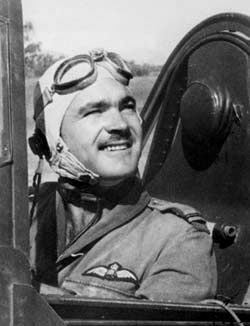 It was in the late
afternoon of the 7th
September, when 234
Squadron ran into a
force of 60 German
aircraft consisting of
Do 17's and escorting Bf
109's. Pat was leading
his Section in Spitfire
X4009 and dived to
attack the bombers. The
official report states
that after attacking a
bomber from close range,
a large section of the
bomber broke away and
appeared to hit the
Spitfire, which crashed
in the village of
Bessels Green. Pat's
body, thrown clear of
his aircraft, came down
into a garden in the
nearby village of
Sundridge. The official
record shows that Pat
died around 18.30 hrs.
Pats wife, Kay, was a
widow after only six
weeks of marriage.
It was in the late
afternoon of the 7th
September, when 234
Squadron ran into a
force of 60 German
aircraft consisting of
Do 17's and escorting Bf
109's. Pat was leading
his Section in Spitfire
X4009 and dived to
attack the bombers. The
official report states
that after attacking a
bomber from close range,
a large section of the
bomber broke away and
appeared to hit the
Spitfire, which crashed
in the village of
Bessels Green. Pat's
body, thrown clear of
his aircraft, came down
into a garden in the
nearby village of
Sundridge. The official
record shows that Pat
died around 18.30 hrs.
Pats wife, Kay, was a
widow after only six
weeks of marriage.
However,
we now know that the
action was also
witnessed from the
ground, and Tony Hall,
of Sundridge, writes to
tell me that his own
father always maintained
that, as he watched the
aerial combat and
ensuing dogfights taking
place right over his
house, it was his belief
that Pat deliberately
rammed the Dornier in
order to bring it down.
Tony has had a lifelong
interest in the Battle
of Britain, and of
course, thence in Pat
Hughes in particular.
His father's wish that a
memorial to Pat may one
day be located in the
village where he fell
has come to fruition,
courtesy of the Battle
of Britain Memorial
Society. This was
unveiled on the 65th
anniversary of Pat's
death in 2005. Pat's
former colleague, Wing
Commander Bob Doe, now
aged 86 and in poor
health himself,
remembers Pat with
affection, was unable to
attend the ceremony. Bob
mentions Pat and his
exploits in the
acclaimed book, "Fighter
Pilot", which Bob wrote
after the war.
Pat was
credited with 14 downed
enemy aircraft, plus
other shared planes,
making him the highest
scoring Non-British
Fighter Pilot in the
Battle of Britain. One
fact that came to light,
a great deal later, was
that Pat is also
credited with shooting
down a very well-known
German airman indeed,
none other than
Oberleutnant Franz von
Werra, the famous "One
That Got Away",
something else Pat
himself would never know
about.
Von Werra
was the German Luftwaffe
fighter ace, who as a
prisoner escaped from
British POW camps
several times, only to
be recaptured every
time. After an escapade
in which he very nearly
nicked a Spitfire to fly
home in, along with
other notorious German
escapees, von Werra was
shipped off to Canada -
our version of Colditz,
I suppose - and finally
made his successful
escape from a moving
train at night into deep
snow and thence to cross
the frozen St Lawrence
River in a stolen rowing
boat to freedom in the
US ... just a few months
before America came into
the war. He was
repatriated to Germany
to continue his flying
career, only to
eventually lose
his own life in Russia
on the Eastern Front.
After a
service at St James',
Sutton-in-Holderness,
Hull, on 13th September
1940, Pat Hughes was
buried with full
military honours in the
churchyard.
Curiously, his address
given in the burial
record at the time of
his death was 384, James
Reckitt Avenue.
Later, the release of
the 1939 Register would
reveal that was Kay's
home too, where Kay
lived with her mother.
and that record was
updated later to show
Kay's newly married name
of Hughes. But we doubt
he ever lived at or
visited Kay's home, but
having married her, of
course, that would now
be his home address
other than an RAF billet
somewhere on or near an
RAF station.
His grave was tended for
many years, up to the
mid-1990's, by (the
late) Mr Bert Knowles on
behalf of the Sub-Branch
of the Spitfire Society.
Since around 1995,
Marjory Shirtliff and
her husband Norman
performed this task,
keeping the grass tidy,
laying flowers and
occasionally washing
down the marble
headstone until recent
years, when Marjory died
in 2018. It is also
noteworthy that the
stone itself, in common
practice with all war
graves, doesn't mention
Pat's Australian
nationality, just that
he was a pilot with the
RAF, which is partly
true, as he was on
secondment to the RAF.
Pat was noted within the
squadron for defiantly
keeping and wearing his
darker-blue RAAF uniform
.. a proud Australian
indeed, and no doubt he
would have returned to
the RAAF had he survived
the war. Marjory was in
regular contact with
Connie, Pat's sister in
New South Wales, until
Connie herself passed
away in July of 2010,
aged 95.
At
Christ's Church, Kiama,
on the south coast of
NSW, a memorial tablet
placed on the churchyard
fence by another of
Pat's sisters, Muriel
Tongue, reads:
"This panel is dedicated
to the memory of F/Lt P
C Hughes DFC killed in
action Battle of Britain
7 September, 1940. Aged
23."


Pat's
posthumous
Distinguished Flying
Cross ..... and his
RAF cufflinks ...
held by his widow
Kathy's family in the
UK and now donated
here by her sons.
There's quite a
story to how this
DFC was first
misplaced, sent in
error to his mother
instead of his widow
and thence lost for
several years when
forgotten about in a
church safe. A
replacement copy was
thus issued to his
widow, and then much
later, almost
miraculously after
Pat's mother's
death, the
long-forgotten about
original was
re-discovered in
Australia once more.
So
that original now
rests with the
RAAF museum in
Australia, donated
by his Australian
family. The
copy pictured here
is the
replacement,
marked "R" on the
back, and "1940"
to denote an issue
during the Battle
of Britain, and is
now held by
descendants of
Kathy's family.
Pat's father
was a
schoolteacher in
Cooma, so we
volunteers at
the museum like
to think that he
would have well
approved of this
webpage, and his
son's memory
being honoured
in this old
Victorian school
building. And
this also almost
next door to the
very churchyard
where his son is
buried, as well
as holding
photos, letters
and other items
of family
memorabilia for
visitors to
examine and
learn of those
momentous days,
and the lives
they cost.
__________________________________________
UPDATE:
JAN 2025
Followers of
this page and
Pat's story may
be interested to
know of a recent
project in
Australia, at
the Scone
Memorial
Airport, in NSW
a good way north
of
Canberra.
Here
is a museum with
a project called
the "Hunter
Fighter
Collection"
where they
restore historic
aircraft of
special interest
to the RAAF and
Australian
airmen, from
bi-planes to
modern jet
fighters.
One such project
is an incredible
undertaking to
restore Pat's
actual wrecked
Spitfire X4009,
recovered from
it's crash site
all those years
ago in Surrey. A
company on the
Isle of Wight is
restoring what
can be restored,
and rebuilding
such parts that
are missing or
beyond
saving.
This project
aims to be able
to display for
visitors Pat's
Spitfire as best
as it can be
restored.
To raise more
funds for this,
an independant
watch-making
company based in
Denmark,
REC Watches,
have made a
limited
edition of
memorial
watches
dedicated to
the memory of
F/Lt Pat
Hughes, and
his
aircraft.
They are made
from recovered
parts of his
actual
aircraft.
Sold only in
Australia,
along with
other items
like prints
and other
aircraft
memorabilia,
they are
priced at $AU
3,500 apiece,
where 100% of
each sale goes
to the
restoration
project.
--------------------------------------------------------------------------------
Another special memorial,
this time depicting his
aircraft and the area of his
major operations, was unveiled
and dedicated at Monaghan
Hayes Place, Cooma, the town
of Pat's birth, on 26th March
1998, in the presence of
members of the Spitfire
Association. Seeing
Kathleen's amazing folder of
collected letters and family
records, recently donated to
the museum by her sons, tells
us that Pat is one of two
wartime veterans honoured in
that town. In and around
Cooma, the name of our Battle
of Britain fighter pilot, Pat
Hughes, is very well known
indeed.
We agree ...
and rightly so. We do
hope they approve of this
page.

Pat,
with the CO and other
members of 234 Squadron,
here seated on CO's
right. : click to
enlarge image :
other
squadron members seated
on wing:
Sgt W Hornby : Sgt G
Bailey : F/O F Connor :
P/O K Dewhurst : P/O H
Horton : P/O Hight : P/O
Hardy : P/O Parker : Sgt
Harker : P/O E Mortimer
Rose
standing:
J Hemmingway : Sgt
M Boddington : Bish Owen
F/O Prail : Sgt Z Klien :
Sgt J Szkagowski
seated front:
F/Lt P Hughes :
S/Ldr Barnett : Sgt J
Theilmann
A
larger version of this
photo is available to
family members of the
other men.
Three of
Pat's friends, fellow
pilots; on the left an
unknown wing-commander,
to the right, two unknown
flying officers, all
possibly of 234 squadron.
These photos are part of
Pat's collection, donated
to the museum.
It goes without saying,
relatives of these men can
have a copy sent to them.
We
hope that this page of
details will be of
interest to anyone who
has ever visited Sutton
churchyard, and paused
to wonder how a 23
year-old Australian came
to be buried here.
A
few more photos of Pat's
grave, and the general
churchyard, are
below.
In September, 2021, our
museum inherited
Marjory's complete
folder of information
that she had collected
and beautifully arranged
all about Pat, when her
daughters Cheryl and
Lesley donated them to
our ongoing care.
The folder is on our
shelves in our library
and available for all
visitors to view for
their own research.
We
are indebted to the
following for the above
details:
Reference:
"A Few of the Few",
and "A Spitfire
Pilot's Story," both
by Denis
Newton,
published by the
Australian War
Memorial.
Stan
Howard . .
Chairman of the
Memorials
Sub-committee of the
Cooma-Monaro
Sub-Branch of the
Returned and Services
League of Australia.
Bronwen
Hughes . .
for doing the research
and finding and
supplying me with all
the above details, and
in so doing, found that
her family is indeed
related to Pat Hughes'
branch of the Hughes
family after all. Her
act of kindness (see
below) is what helped to
find much of the above
information in the first
place. Of course, at the
time I first contacted
Bronwen, I had no idea
that Marjorie and Norman
were tending the grave
and had been already in
touch with Pat's sister
for many years. It is
indeed a small world
now.
THERE'S
A QUITE A STORY . .
of how we in Sutton came
to find more details
about
Pat and his family
I
originally wrote to
Bronwen, having found
her name and email
address in an Internet
Directory. She was on a
list of people on a
website called "Random
Acts of Genealogical
Kindness" where
volunteer helpers offer
help and research in
Family History matters.
It seemed too good to be
true.
But
Bronwen lived quite some
miles away down the
coast away from
Haberfield, and Kiama,
and at first any link
between herself and Pat
seemed remote and
clutching at straws. For
she then knew nothing of
any link herself.
Nevertheless,
touched and impressed by
Pat's story, Bronwen put
a free advert in the
Sydney Telegraph, and
was inundated with
replies, from both
people that knew the
family and of Pat's RAF
service, and from the
family itself. It just
goes to show the power
of the internet. And the
nice twist to the tale
is that initial research
seems to show that
Bronwen IS related to
this fighter ace after
all. This is her reply
to me when she first
received the details
back from Stan Howard.
Dear
Rob,
I have had a marvellous
result in my quest for
information on Paterson
Clarence Hughes. His
deeds are well known to
his family and the
Spitfire Society here.
Apparently 4 years ago
they held a special
service for "our boy". I
have attached an email I
received today. I'm sure
you will find it of
interest. (shown above).
It
was over three weeks ago
I placed the application
to have a notice in the
Sydney newspaper, it was
only printed in last
Wednesday's edition (22
May 2002), my phone has
not stopped, I have been
inundated with calls
from family members and
people who have heard of
our brave young fighter
pilot. I have passed on
the information obtained
from the website. "Pat"
was also a descendant of
one of the first fleet
convicts sent to
Australia.
Many
thanks for your original
email, it started a
search that has been
most rewarding, and it
now looks like our
family is related to
Paterson's line.
I have
forwarded your original
email onto a family
member and I am sure he
will be in touch with
you.
Regards
Bronwen Hughes
Update
2002:
And indeed, I can report
that we are now in
regular contact with
Pat's nephew, Malcolm
Booth, whose late mother
was one of Pat's
sisters. We have had
quite a bit of
correspondence, and as
can be imagined, the
delight of the family in
seeing that Pat is still
in such peaceful
surroundings is good to
feel, even at this great
distance. These
following 7 full-sized
pictures are for them .
. click on any picture
to see a larger version,
and it will open in a
new window. Close each
window as you move onto
the next, or you'll run
out of memory on some
older machines. These
thumbnails are about
1/3rd size. Please
bear in mind that the
quality of early digital
cameras in 2002 was not
what it is today; they
are rather poor images
by today's standards.
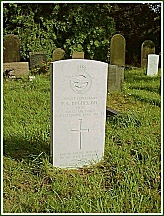
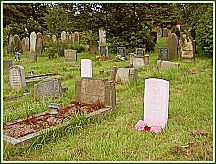
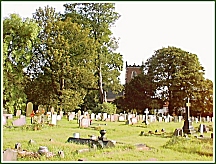
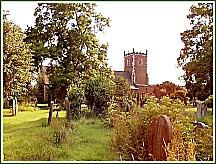
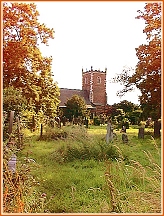
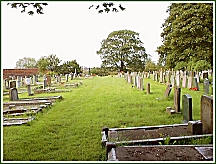
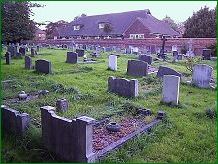
An evening view, on
Sept 15, Battle of
Britain Day, across
the churchyard, back
towards the Church
Hall. The back of
Pat's grave is the one
right in the middle of
the photo.
Click this view for a
larger and clearer
image of the
inscription, taken
Sept 9th 2006.

The Sutton & Wawne
Museum Home Page
THE
DEANNA DURBIN LINK
Perhaps
it's time for a few
more photos here ..
maybe this one of
Marjorie and Norman
Shirtliff, (sadly,
now both deceased)
taken with Merrill
Rhodes, on Pat's
Memorial Day, back
on Sept 7th, 2006.
This is a good
indication of how
this couple have
taken on and cared
for this grave over
the past 15 or more
years.
I only recently
learnt, in 2010, the
story of just how
Marjorie and Norman
came to be involved.
It's all down to the
screen actress
Deanna Durbin.
Marjorie is a great
fan, and in the
Deanna Durbin
Society. She became
friends with fellow
member, Jean Holmes,
in Barton on Humber
just over the water.
Jean is very
involved in looking
after war graves
generally, and on
telling Marjorie
about the ones in
Sutton, Marjorie and
her husband took on
the particular task
of looking after
Pat's, which they
have done ever
since. Deanna was a
popular actress of
the war years, and
understandably
especially popular
with the armed
forces. It's not
beyond credibility
that Pat himself
could have been
rather keen on the
lass himself, as
would most of his
and other squadrons.
A wonderful aside to
an amazing story.
And at the time of
writing, Deanna
herself is still
alive, living in
Paris, and will be
90 next year, and
would probably be
equally amazed that
her name and career
would become
connected all these
years later with an
Australian RAF
pilot. For those
that are interested,
visit
Deanna's page on
the IMDB. There used
to be a Deanna
Durbin Society, now
closed. She died in
2013.
Use your 'BACKSPACE' key
when done,
also for the ones below.
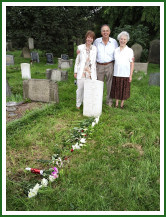
They
have taken Pat's
story to heart, and
were regularly in
touch with another
of Pat's sisters in
Australia, until she
herself died in 2010
. These little
thumbnails open up
into bigger views.
After we laid the
flowers, I went back
and took these other
shots later in the
day.
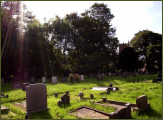
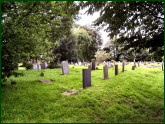
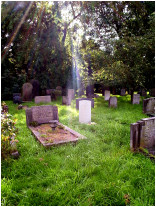 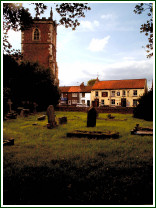
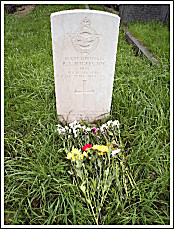 November
2005 November
2005
A further update to
Pat's story has been
the dedication of
the Memorial Plaque
mentioned above, now
affixed to the wall
of the bungalow in
Kent where Pat's
fallen body was
found.
The service of
dedication was on
the 65th anniversary
of Pat's death in
September, the
arrangements being
made largely by Tony
Hall who still lives
in the same
bungalow. It was
Tony's late father
who had witnessed
the dogfight between
Pat's squadron and
the enemy, and who
saw the stricken
Spitfire come to
grief. It had always
been his father's
wish that this pilot
should be remembered
in this way, and so
with the help of the
Battle of Britain
Society, 2005 saw
his wish granted. So
Pat is now
remembered both
where he fell, and
where he is buried.
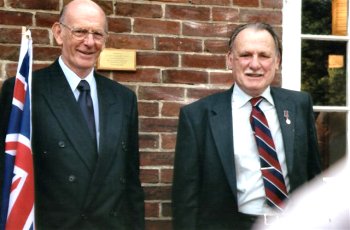

Tony Hall, seen here
on the left, along
with his brother
Des.
Click on the small
image to read the
plaque on the wall
behind them.
In
2008, as the 68th
anniversary of
Pat's death
approached, a
memorial stone was
built and
dedicated,
alongside Main
Road in Sundridge
near to Tony
Hall's garden
where Pat's body
was found, at a
special service on
August 23rd. This
stone is one of a
series
commissioned by
the Shoreham
Aircraft Museum
commemorating
Battle of Britain
pilots
who died in the
immediate area.
Tony
Hall wrote to
Pat's nephew,
Malcolm,
enclosing this
photo.
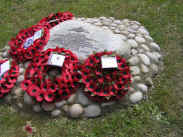 "
.. Dear Malcolm,
Just got back from
the dedication
ceremony. A
wonderful sunny
day for it, after
our wettest August
ever. A whole
crowd of villagers
and V.I.P's,
including Wing
Commander Bob Doe,
& The
Australian Air
Attaché. We had a
very smart parade
by the Air Cadets
and a great
flypast by the
Spitfire, "The
Spirit of Kent". I
believe a video
was filmed, as is
usual at these
dedications; I
will see you get
one. The Shoreham
Aircraft Museum
did a grand job of
organising the
event. More to
follow in Post
eventually. "
.. Dear Malcolm,
Just got back from
the dedication
ceremony. A
wonderful sunny
day for it, after
our wettest August
ever. A whole
crowd of villagers
and V.I.P's,
including Wing
Commander Bob Doe,
& The
Australian Air
Attaché. We had a
very smart parade
by the Air Cadets
and a great
flypast by the
Spitfire, "The
Spirit of Kent". I
believe a video
was filmed, as is
usual at these
dedications; I
will see you get
one. The Shoreham
Aircraft Museum
did a grand job of
organising the
event. More to
follow in Post
eventually.
Regards, Tony Hall
.. "

image
courtesy of
Australian War
Memorial
P01397.001
and RAAF Museum,
Point Cook,
Victoria,
Australia.
This
photo was taken by
an unknown
photographer in
1939,
just at the start
of the war, when
Pat was still a
Pilot Officer.
This
link is to the Shoreham
Aircraft
Museum
showing photos
of the
dedication of
the above stone,
as well as of
other memorials,
and is well
worth a visit.
Pat's is the 5th
memorial down
the list.
Pat
was just one of
many, the famous
'few', who never
lived to see the
outcome of the
battle whose
success, and cost,
we commemorate on
this day every year.
We should, and do,
remember all of
them. Pat's story is
very representative
of the many who came
from Overseas, from
every corner of the
Empire, black and
white, almost every
creed and colour, to
help fight for the
ideals that Britain
held to be worth
fighting for.
Indeed, even as I
write, we still
fight for. As a
nation, we forget
their sacrifice and
example at our
peril.
I
hope we have indeed
made it certain that
this young man,
along with all the
others buried
beneath war graves
in Sutton
churchyard, will
never be forgotten.
And
finally, we are
indebted firstly to
(the late) Mr Bert
Knowles of Sutton,
and latterly (the
late) Marjorie and
Norman Shirtliff of
Holderness High
Road, Hull, for
their continuing
service of tending
Pat's grave, and
laying flowers for
him, for so many
years. I know they
were all very
pleased there were
now photos of Pat on
this page and a
fitting tribute to
his service.
RLH.
28 Aug 2009
updated with new
smiling 1939 photo
of Pat in the
cockpit,
in time for
anniversary on 7
September 2009
Random Acts of
Genealogical
Kindness
is how I came to
find Bronwen and her
good help.
This page is worth a
look.
They are a worthy
cause, and need
volunteers
all over the world.
Battle of Britain
Historical Society
.. have a touching
webpage devoted to
Pat, with a short
story in verse
telling of his life
and untimely death.
Kristen Alexander
Books, of Mawson in
New South Wales
is an author who has
written several books
on aviation matters
pertaining to
Australia. In
particular, her book
"Australia's Few and
the Battle of
Britain", published in
2015 in a UK edition
by Pen & Sword,
contains details of
Pat Hughes' service in
both the RAAF and the
RAF, as well as the
seven other Australian
pilots who served in
the Battle of Britian.
Details of how to
purchase are on her
site, and a picture of
the book cover is on
our
Publications
Page
An
Australian Forces
Memorial Site
that lists more
details about Pat,
and also,
about 5 photos of
him, one in a
Hurricane fighter.
When the page loads,
click on the
COLLECTIONS SEARCH
and type in Pat's
full name thus :
PATERSON CLARENCE
HUGHES
Back
to War Memorial
Page
TOP
of PAGE

The Sutton & Wawne
Museum Home Page
|













